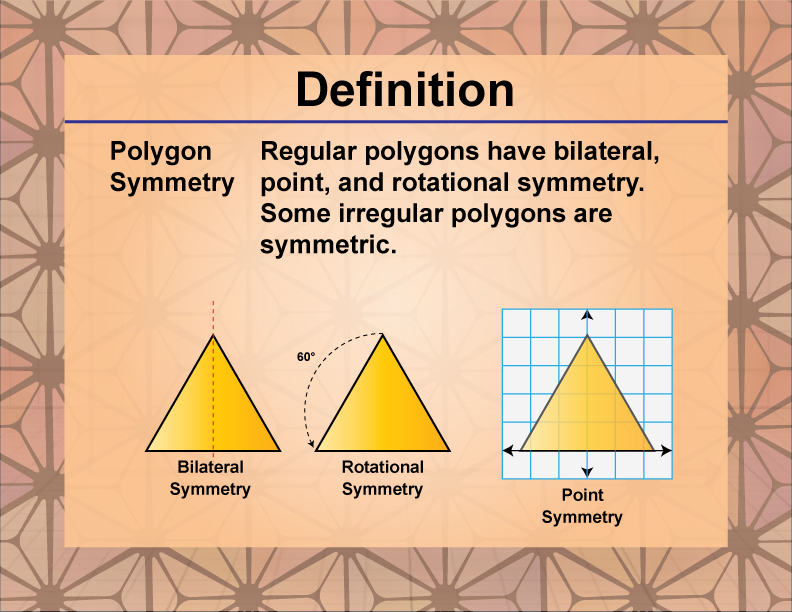
Display Title
Definition--Polygon Concepts--Polygon Symmetry
Display Title
Polygon Symmetry

Topic
Polygons
Definition
Polygon symmetry refers to the property of a polygon being invariant under certain transformations, such as reflections or rotations.
Description
In geometry, symmetry is a fundamental concept that helps in understanding the inherent properties of shapes and structures. For polygons, symmetry can be observed in various forms, including reflective symmetry and rotational symmetry. Reflective symmetry, also known as line symmetry, occurs when a polygon can be divided into two identical halves by a straight line. This line is called the line of symmetry. For example, a regular hexagon has six lines of symmetry, each passing through a vertex and the midpoint of the opposite side.
Rotational symmetry, on the other hand, is when a polygon looks the same after being rotated around a central point by a certain angle. The order of rotational symmetry is determined by the number of times the polygon matches its original shape during a full 360-degree rotation. For instance, a square has rotational symmetry of order 4, as it matches its original shape after rotations of 90, 180, 270, and 360 degrees.
Understanding polygon symmetry is crucial in various fields such as architecture, art, and molecular biology, where symmetrical patterns often play a significant role in design and function. Symmetry also simplifies many geometric problems and proofs, making it a powerful tool in the study of polygons.
For a complete collection of terms related to polygons click on this link: Polygons Collection.
| Common Core Standards | CCSS.MATH.CONTENT.5.G.B.3, CCSS.MATH.CONTENT.5.G.B.4, CCSS.MATH.CONTENT.3.G.A.1, CCSS.MATH.CONTENT.3.MD.D.8, CCSS.MATH.CONTENT.6.G.A.1, CCSS.MATH.CONTENT.6.G.A.3, CCSS.MATH.CONTENT.HSG.CO.A.3 |
|---|---|
| Grade Range | 3 - 8 |
| Curriculum Nodes |
Geometry • Polygons • Definition of a Polygon |
| Copyright Year | 2021 |
| Keywords | polygon, definitions, glossary term |